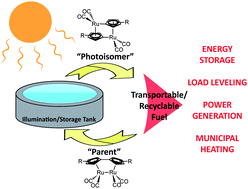This blog site began focused on renewable energy leading to a sustainable environment. So almost weekly I return to this subject. Today, I will summarize ENERGY MATTERS, soundbite summaries from the American Energy Society:
- Some info of interest.
- Of historical note, between 1086 and 1330, the windmill was introduced to Europe from Iran. Other innovations during this period included plowing with horses, wool spinning wheels, compasses and eyeglasses. Then came the Black Death.
- The most productive mining region in the world is Western Australia, with Saskatchewan in Canada at #2, Nevada #3 (was #1 in 2020), Alaska #4 and Arizona #5.
- Texas is the top U.S. state in clean energy development. In megawatts:
- The total number of oil and natural gas rigs in the U.S. is 689, compared to 432 a year ago.
- Texas 342
- Oklahoma 50
- North Dakota 33
- Wyoming 16
- Colorado 15
- Ohio 12
- The top wind energy countries as a percentage of total electricity produced:
- #1 Denmark (48% of total electricity generated).
- #2, and this is a surprise, Uruguay (43%).
- #3 Ireland (33%).
- #4 Portugal (27%)
- However, with respect to total wind energy produced in megawatts:
- #1 China 236,402: also has the largest wind turbine in the world, Mingyang Smart Energy, 16 MW. You can imagine a 100 yard football field. Tip to tip, the rotor is 265 feet in diameter.
- #2 USA 105,466
- #3 India 37,506
- #4 France 16,643
- #5 Brazil 15,452
- #6 Sweden 8,804
- #7 Turkey 8,056
- Offshore wind farms are 2.6 times more expensive to generate electricity than those on land. The estimated costs are 22 cents/kWh for those at sea compared to 6.6 cents/kWh on land. The leading countries in megawatts are:
- #1 UK 9723
- #2 Germany 7493
- #3 China 6838
- How far behind is the USA?
- 30 MW wind farm off Block Island, Rhode Island.
- 12 MW pilot project off the coast of Virginia.
- 800 MW Martha's Vineyard Wind project planned.
- 132 MW Long Island (NY) Wind Farm planned.
- Lake Erie demonstration off the Ohio coast.
- Spent nuclear fuel is stored in 80 locations in 35 states.
- But they only generate microrem/hour because they are stored underground.
- Passengers on a one-hour airplane flight will be exposed to 700 microrem because they are closer to the sun.
- New thermophotovoltaic (TPV) cells convert heat to electricity with over 40% efficiency, on par with traditional steam turbine power plants. This new MIT and National Renewable Energy Laboratory design takes power from white-hot heat sources (3,452 to 4,352 F). There are no moving parts, so maintenance is low. Also known as a thermal battery. What are they?
Thermophotovoltaic cells work by heating semiconducting materials enough to significantly boost the energy of photons. At high enough energies, those photos can kick an electron across the material's "bandgap," generating electricity.
- I once lived in Baton Rouge. Traveled a lot to New Orleans, and the highway was lined with petro-chemical plants. Called Cancer Alley, it has a higher cancer risk than 95% of the U.S.
- Another storage future? Keep an eye of MOlecular Solar Thermal (MOST) systems. Essentially a specially designed molecule of carbon, hydrogen and nitrogen that becomes an energy-rich isomer with sunshine. Can be connected to a thermoelectric generator for electricity.
- Kauai Community College showcases its tiny houses.
From an earlier ENERGY MATTERS:
The revolution in sustainability has not yet happened. And, according to the IPCC's most recent report on the climate, there is no evidence of good progress. In fact:
- Greenhouse gas emissions are still rising.
- It's no longer enough to just cut emissions. We also need to remove carbon already in the atmosphere.
- We need great gigaton-scale solutions right now, but even just good solutions would be great.
Clearly, world governments have failed to address the climate problem; indeed, even if every country met its most ambitious goals, total global emissions would fall only 9%.
Mom is watching.
-















Comments
Post a Comment